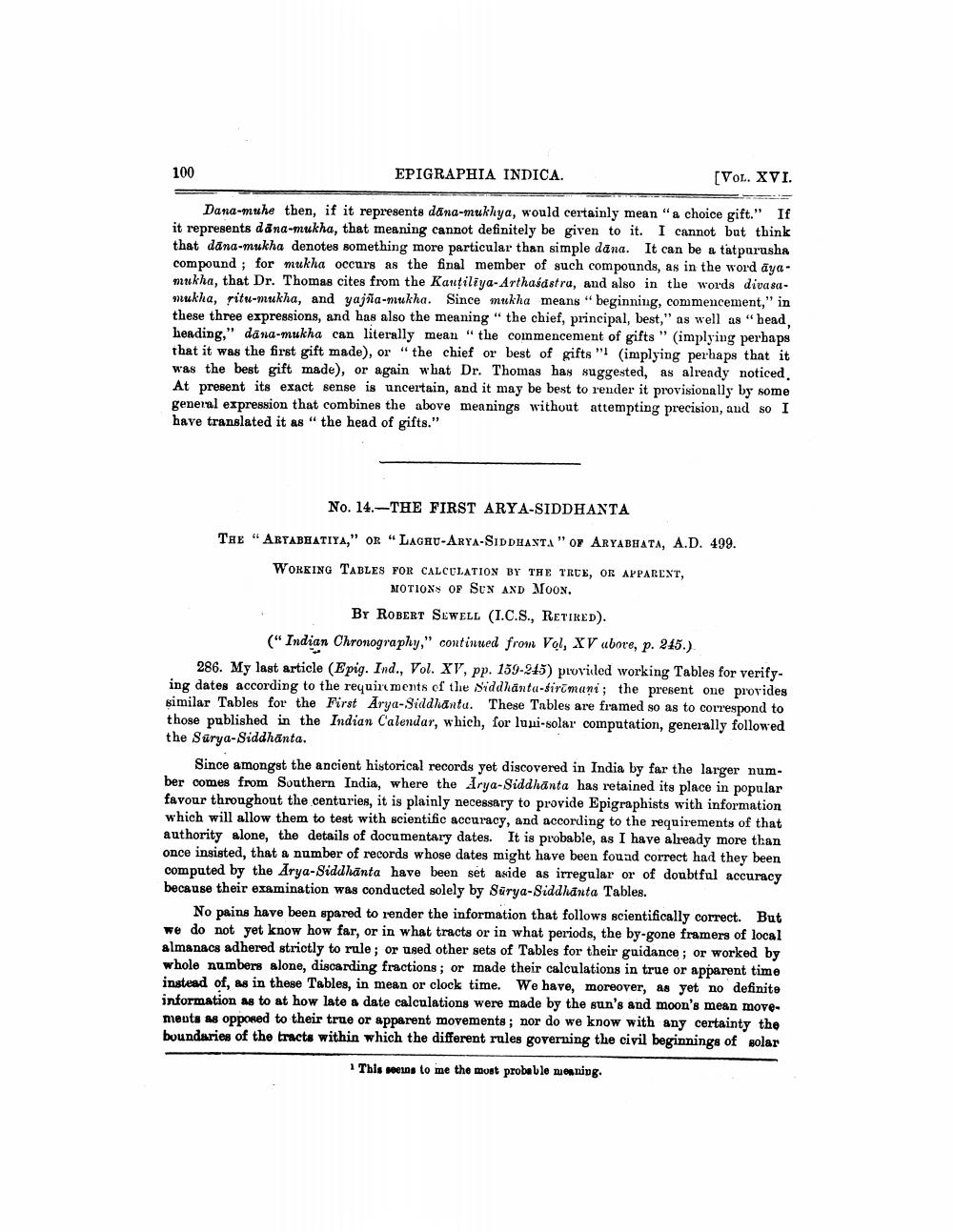________________
100
EPIGRAPHIA INDICA.
[VOL. XVI.
"
Dana-muhe then, if it represents dana-mukhya, would certainly mean a choice gift." If it represents dana-mukha, that meaning cannot definitely be given to it. I cannot but think that dana-mukha denotes something more particular than simple dana. It can be a tatpurusha compound; for mukha occurs as the final member of such compounds, as in the word ayamukha, that Dr. Thomas cites from the Kauṭiliya-Arthasdstra, and also in the words divasamukha, ritu-mukha, and yajña-mukha. Since mukha means "beginning, commencement," in these three expressions, and has also the meaning " the chief, principal, best," as well as "head, heading," dana-mukha can literally mean "the commencement of gifts" (implying perhaps that it was the first gift made), or "the chief or best of gifts" (implying perhaps that it was the best gift made), or again what Dr. Thomas has suggested, as already noticed. At present its exact sense is uncertain, and it may be best to render it provisionally by some general expression that combines the above meanings without attempting precision, and so I have translated it as "the head of gifts."
No. 14. THE FIRST ARYA-SIDDHANTA
THE "ARTABHATIYA," OR "LAGHU-ARYA-SIDDHANTA" OF ARYABHATA, A.D. 499.
WORKING TABLES FOR CALCULATION BY THE TRUE, OR APPARENT,
MOTIONS OF SUN AND MOON.
BY ROBERT SEWELL (I.C.S., RETIRED).
("Indian Chronography," continued from Vol, XV above, p. 245.)
286. My last article (Epig. Ind., Vol. XV, pp. 159-245) provided working Tables for verifying dates according to the requirements of the Siddhanta-siromani; the present one provides similar Tables for the First Arya-Siddhanta. These Tables are framed so as to correspond to those published in the Indian Calendar, which, for luni-solar computation, generally followed the Surya-Siddhanta.
Since amongst the ancient historical records yet discovered in India by far the larger number comes from Southern India, where the Arya-Siddhanta has retained its place in popular favour throughout the centuries, it is plainly necessary to provide Epigraphists with information which will allow them to test with scientific accuracy, and according to the requirements of that authority alone, the details of documentary dates. It is probable, as I have already more than once insisted, that a number of records whose dates might have been found correct had they been computed by the Arya-Siddhanta have been set aside as irregular or of doubtful accuracy because their examination was conducted solely by Surya-Siddhanta Tables.
No pains have been spared to render the information that follows scientifically correct. But we do not yet know how far, or in what tracts or in what periods, the by-gone framers of local almanacs adhered strictly to rule; or used other sets of Tables for their guidance; or worked by whole numbers alone, discarding fractions; or made their calculations in true or apparent time instead of, as in these Tables, in mean or clock time. We have, moreover, as yet no definite information as to at how late a date calculations were made by the sun's and moon's mean movements as opposed to their true or apparent movements; nor do we know with any certainty the boundaries of the tracts within which the different rules governing the civil beginnings of solar
1 This seems to me the most probable meaning.




